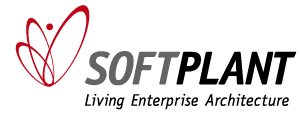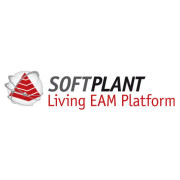We have just released Living EAM Platform version 4.0. It includes following new features and improvements:
- UI-based Configuration:
- Starting with this new release the configuration of Ontology-related functions are no longer done using XML files on the server but using the user interface. Within the view of each ontology element there is now a new tab “Configuration” within the module Living Semantic Platform.
- For ontology classes you can edit overview pages for editing individuals, quality metrics including the definition of rules, display of context information and the assignment to architecture layers. For designing overview pages, we provide a visual editor including a preview. It also includes additional elements to visualise individuals on overview pages such as a visualisation of dependent individuals using a graph chart. Furthermore, overview pages can now be assigned to specific roles. The configuration of data properties includes the display of values as links (data property patterns). For individuals the definition of visualisation colors is now supported using the configuration mechanism.
- For transferring configurations between different stages, the configuration of an ontology element can be exported and imported.
- Editing:
- Show quality metric for all individuals of a class: If you have assigned a quality metric for an ontology class, you can now show the metric for all architecture elements within the architecture class view. Using a new ontology maintenance activity, the recalculation of the quality metric for all individuals of a selected class can be scheduled.
- Detail page for annotation properties: For editing annotation properties a detail page like those for data and object properties has been added. Within the new detail page all annotations for the selected annotation property are shown and additional means for defining annotation properties are provided. The included SPARQL editors now also include annotation properties for auto complete suggestions.
- Import of excel files: When importing data from excel files, the way IRIs are generated for new individuals can now be customized.
- OWL export: The OWL export now allows for creating an export from single or multiple ontologies. When you are exporting a single ontology, you can now select in detail, which ontology elements should be included in the export.
- REST-API:
- Fine-grained access control for the Editor API: The Editor API now checks for two additional permission: create/edit and delete A-Box elements of an ontology. These new permissions can be assigned to roles within the user management.
- Session API: The new Session API returns information about the roles and permission of the user that is sending the query.
- History API: The history can now be queried based on all changes within the last n days. Also, all the data returned for each changed is now provided separately – i.e. IRIs and labels for subject, property and object / value are included as explicit elements in the API result.
- Additional Changes:
- Technical updates and performance optimizations: We have updated the libraries for full-text search and optimized the performance within the application.
- Metamodel translations: The translations to specific metamodel elements of the default LEA architecture model has been refined.
- UI refinements: The breadcrumb links of architecture classes and elements now include the architecture layer. Also, multi selection has now been enabled for T-Box elements at several dialogs.
- Visualisation of cluster maps: If you are using SPARQL queries as data source ORDER BY clauses are now recognized for sorting the elements within the visualisation.
Our contact persons are available for any questions regarding the new features of our Living EAM Platform. In case you need more information, we would be happy to provide you a test account for our tool.

